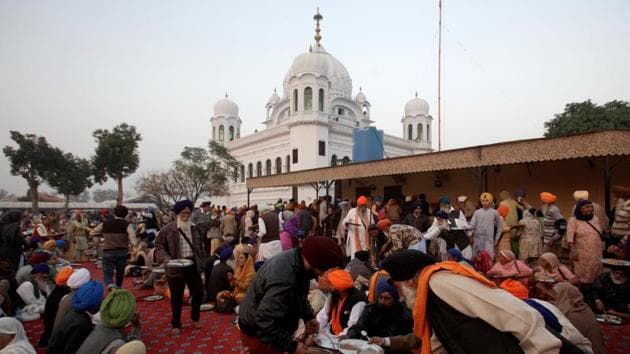Kartarpur corridor inauguration: A day of celebration and reflection | HT Analysis
On this historic day, pilgrims will walk down the corridor with gratitude for this unique opportunity
Every day in thousands of gurudwaras across the world, Sikhs pray for unhindered access to the shrines put out of reach by the Partition of India. Specifically, the most hallowed shrines in Pakistan are related to the life of the founder of the faith, Guru Nanak Dev: Nankana Sahib, commemorating where he was born 550 years ago; Panja Sahib, which marks the site of a major episode during his travels; and Kartarpur Sahib, built on the banks of the Ravi, where he spent the last 18 years of his life. Just four kilometres from the international border, and visible from India, Kartarpur Sahib has been tantalisingly close, and yet so far. The politics of the corridor aside, it would appear that the daily prayers have been answered, at least in part; the assurance of daily access to thousands in contrast to the restricted access available earlier will provide immense emotional succour to millions.

But Guru Nanak’s 550th birth anniversary should not be an occasion for celebration alone. It is also a moment for reflection, for rediscovery, and reiteration of his essential message. Several important aspects of the message emanate from the Guru’s life at Kartarpur, where he settled down after more than two decades of constant travel. His four long spiritual journeys, or udasis, had taken him in all directions, and covered, in the words of Bhai Gurdas, the Sikh poet and amanuensis, the nine known regions of the earth. During these extensive journeys, the Guru spread his message of truth and truthful living, of compassion and equality among men, and of the true nature of creation and worship. He interacted with learned men of all faiths, and dispelled ignorance and darkness, rejecting renunciation and empty ritualism.
At Kartarpur, Guru Nanak gave practical shape to his spiritual message. Discarding his traveller’s robes for the dress of a householder, he began to work in the fields. A community of followers quickly grew around him; Hindus and Muslims, the rich and the poor, and dervishes and merchants accepted him as their guide. This was not a monastic order in the making, but a community of people with families and worldly responsibilities — traders, farmers, artisans and those from the so-called lower professions attracted by the Guru’s spiritual message.
The core of the message was an affirmation of the world, seen as a reflection of divine purpose; man’s path was to live in this reality and, staying above its impurities, do all he could to alleviate human suffering. Pure piety, expressed in rituals and self-abnegation, was seen as superficial; a higher importance attached itself to practical virtue. This message was encapsulated for the community in simple words: kirt karo: do work; nam japo: meditate on His name; and vand chhako: share in charity.
Several important traditions can be traced to Guru Nanak’s time at Kartarpur, among them those attached to concepts of the dharamsal, sangat and pangat. Dharamsal was the place of worship where the community gathered together to listen to the hymns of Guru Nanak in praise of the creator; these hymns are considered divine wisdom received through the agency of the Guru. The dharamsal, later to evolve into the gurudwara, was an important metaphor: it wrested religion back from the selfish grasp of the priestly classes, whose interest lay in making it moribund and abstruse, and restored it to the householder.
In Bhai Gurdas’s words: Ghar ghar andar dharamsal, hove kirtan sada visoa (Every home has become a place of worship/ Where the hymns are sung daily),
The congregation that gathered to listen to the singing of hymns, (kirtan), came to be known as the sangat. The sangat performed a social function as well: The creation of a brotherhood or fraternity. A member of the sangat was known as bhai or brother. The sangat brought together men not just in spiritual pursuit, but also in worldly affairs, forging a community of purpose as well as of action, based on equality and brotherhood. It became a melting pot for the high and the low, whose members mixed together without consideration of caste or status.
A similar reiteration of Guru Nanak’s message came through the tradition of pangat, or line, in which the rich and poor sat down to eat from the langar, or the community kitchen, irrespective of caste or social standing or rank. The langar also embodies the spirit of seva or voluntary service; the Sikh community is known the world over today for its ready assistance and contribution to victims of natural disasters.
When the first pilgrims walk down the Kartarpur corridor, their hearts will be full of gratitude for this unique opportunity. Let there also be a prayer on their lips for the strength to follow Guru Nanak’s perennially fresh message of equality of man, human compassion and Oneness of God.
Navtej Sarna is the author of ‘The Book of Nanak’ and a former India ambassador to the United States
The views expressed are personal






